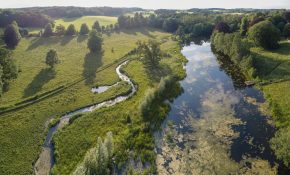Sampling Selbrigg’s ecological history
Tuesday February 11th, 2014
As part of all our projects we get to work with various ecologists, hydrologists and archaeologists, and on Saturday we added something new to the list. For each of our restoration projects we undertake monitoring work to prove that what we are doing is effective, and to inform future projects. Typically this might include measuring changes to water quality or river and floodplain habitat, or looking at fish, invertebrate or plant communities before and after our various schemes. We’ve done all this for Selbrigg Pond, but have also now added something slightly different. Dr Carl Sayer of University College London spent the weekend taking sediment samples from the pond, assisted by Norfolk Rivers Trust, Ian Patmore and Dave Emson (both UCL) and ecological consultants Mark Rylands and Steven Lambert.
By taking cores of from the pond’s bottom it will be possible to understand the pond’s ecological history. Remnants of fish, plants and invertebrates can be identified and dated, showing us how the communities have changed since the pond’s construction. The River Glaven did once run through rather than round the pond, and it is likely that the fluctuating water quality of the river and the change to spring water once the river was diverted will be reflected in the life preserved in the core samples. It will be interesting to see whether the pond returns to something closer to its original state post-restoration, or whether an entirely new community develops.





